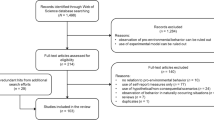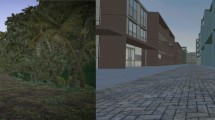Abstract
The present study was triggered by the inconsistency in verbal descriptors in English and Korean describing ‘warm’ and ‘hot’ in the thermal sensation scale. The purpose of this study was to examine the linguistic dimensions of the terms expressing ‘ttatteuhada (warm)’ and ‘yakkan duptta (slightly hot)’ in Korean. A total of 988 urban Koreans (479 males and 509 females) participated in a questionnaire survey consisting of six questions. The one-to-one survey was conducted indoors in December 2008. Our results showed that (1) ‘warm’ and ‘slightly hot’ in Korean are distinctive thermal descriptors; (2) ‘warm’ projects thermal comfort (80.4% of 988 respondents), but ‘slightly hot’ projects some thermal discomfort (54.3% of 988 respondents); (3) a slight thermally comfortable feeling was expressed as ‘warm’ (83.9% of 988 respondents), while a slight thermally uncomfortable feeling was seldom expressed as ‘warm’ (6.2% of 988 respondents) in mild heat environments; (4) the linguistic dimension within the term ‘warm’ was less affected by individual thermal susceptibility (vulnerability) than that of the term ‘slightly hot’. In summary, ‘warm’ in Korean connotes a thermally comfortable feeling. In the case of being a little thermally uncomfortable, Koreans project their thermal sensation through the term ‘slightly hot’, rather than ‘warm’. In conclusion, thermal descriptors in the ISO 10551/ASHRAE scale, i.e., ‘very cold–cold–cool–slightly cool–neutral–slightly warm–warm–hot–very hot’, are not valid for the evaluation of mild hot environments in Korea. A new categorical scale is required in Korean considering the descriptors ‘warm’ and ‘slightly hot’.




Similar content being viewed by others
References
ASHRAE (1992) Standard 55—Thermal environmental conditions for human occupancy. ASHRAE, Atlanta
Bedford T (1950) Environmental warmth and human comfort. Br J Appl Physiol 1(2):33–38
Fanger PO (1972) Thermal comfort. McGraw-Hill, New York
Havenith G, Heus R (2004) A test battery related to ergonomics of protective clothing. Appl Ergon 35:3–20
Heus R, Daanen HAM, Havenith G (1995) Physiological criteria for functioning of hands in the cold. Appl Ergon 26(1):5–13
Holmér I (2004) Cold but comfortable? Application of comfort criteria to cold environments. Indoor Air 14(Suppl 7):27–31
ISO 10551 (1995) Assessment of the influence of the thermal environment using subjective judgment scales. International Standards Organization, Geneva
ISO 7730 (2005) Ergonomics of the thermal environment - Analytical determination and interpretation of thermal comfort using calculation of the PMV and PPD indices and local thermal comfort criteria. International Standards Organization, Geneva
Kaneko T, Horikoshi T (2001) A study on evaluation of Japanese psychological responses to thermal environment by word-choice method with a unipolar scale. J Archit Plann Environ Eng (Transactions of AIJ) 543:93–99
Kaneko T, Horikoshi T (2002) A study on evaluation of Japanese psychological responses to thermal environment by word-choice method with a unipolar scale. Part 2 Winter experiment using single-rating and multiple rating. J Archit Plann Environ Eng (Transactions of AIJ) 553:99–105
Knez I, Thorsson S (2006) Influences of culture and environmental attitude on thermal, emotional and perceptual evaluations of a public square. Int J Biometeorol 50:258–268
Lee JY, Tochihara Y, Wakabayashi H, Stone EA (2009) Warm or slightly hot? Differences in linguistic dimensions describing perceived thermal sensation. J Anthrpol Physiol 28(1):37–41
Lee JY, Stone EA, Wakabayashi H, Tochihara Y (2010) Issues in combining likert and visual analog scales for the assessment of perceived thermal sensation: methodological and conceptual considerations. Appl Ergon 41:282–290
Maeda T, Kobayashi T, Tanaka K, Sato A, Kaneko SY, Tanaka M (2005) Seasonal differences in physiological and psychological responses to hot and cold environments in the elderly and young males. In: Tochihara Y, Ohnaka T (eds) Environmental ergonomics. Elsevier ergonomic book series, vol 3. Elsevier, Amsterdam, pp 35–41.
Stewart AE (2007) Linguistic dimensions of weather and climate perception. Int J Biometeorol 52:57–67
Acknowledgments
We would like to express our thanks to Drs. Myung-Ju Kim, Hyun-Sik Kim, So-Young Kim, Jae-Young Kim, Joon-Hee Park, Ju-Hee Park, and Trifon Metodiev for their support in the survey, and Professors Jeong-Wha Choi and Jung-O Kim for their sincere academic advice.
Author information
Authors and Affiliations
Corresponding author
Rights and permissions
About this article
Cite this article
Lee, JY., Tochihara, Y. Linguistic dimensions in descriptors expressing thermal sensation in Korean: ‘warm’ projects thermal comfort. Int J Biometeorol 54, 357–364 (2010). https://doi.org/10.1007/s00484-009-0287-3
Received:
Revised:
Accepted:
Published:
Issue Date:
DOI: https://doi.org/10.1007/s00484-009-0287-3




